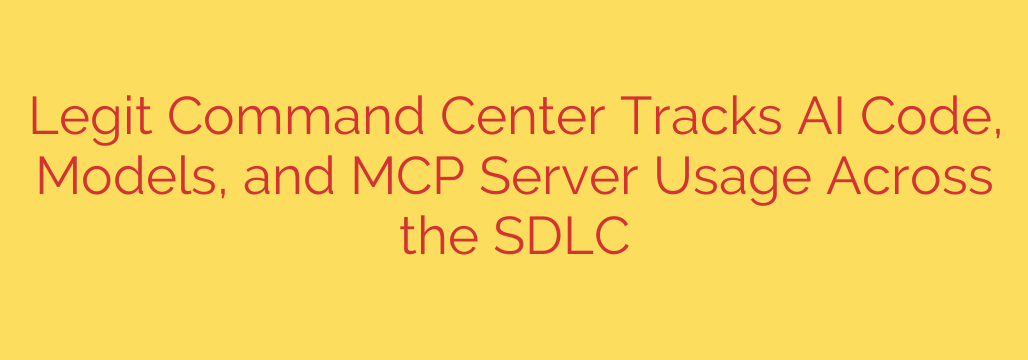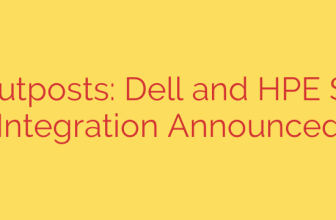
Navigating the New Frontier: How to Secure AI Throughout the Entire Development Lifecycle
The rapid integration of Artificial Intelligence, particularly Generative AI, is transforming the software development lifecycle (SDLC). While developers embrace AI-powered tools to accelerate innovation, this new paradigm introduces complex security risks that traditional application security tools were never designed to handle. The core of the problem is a critical lack of visibility into how AI is being built, deployed, and consumed across an organization.
Without a clear view, security teams are flying blind. They can’t answer fundamental questions: Which development teams are using AI? What specific models are being integrated into our products? Is sensitive company data being sent to third-party AI services? This gap creates a significant blind spot, exposing businesses to new vectors for data leakage, intellectual property theft, and novel cyberattacks.
The Hidden Risks Lurking in Your AI-Powered SDLC
The modern development environment is no longer just about first-party code. It’s a complex ecosystem of internal code, open-source libraries, and now, a new layer of AI components. Securing this environment requires a new approach that addresses three primary areas of risk:
AI-Generated Code: Developers are increasingly using AI assistants to write, debug, and optimize code. While this boosts productivity, it also introduces the risk of incorporating insecure, non-compliant, or buggy code snippets directly into your applications. Without the ability to track the origin and content of AI-generated code, you cannot effectively manage its associated risks.
Third-Party AI Models: The use of pre-trained models from public repositories like Hugging Face is exploding. However, these models can contain vulnerabilities, malicious code, or biases. The challenge is knowing which models are in use, where they came from, and whether they adhere to your company’s security and compliance policies. This is the new frontier of software supply chain security.
Model Consumption Platform (MCP) Usage: Services from providers like OpenAI, Anthropic, and Google are accessed via API keys. The unmonitored or improper use of these platforms can lead to “Shadow AI”—where employees use unsanctioned AI tools. This creates enormous risk, from costly API usage to the catastrophic leakage of proprietary source code or customer data through insecure prompts.
Achieving Full Visibility: The Cornerstone of AI Security
To effectively manage these new risks, organizations must establish a centralized system for visibility and governance. The goal is to secure the entire AI development lifecycle, from the developer’s first line of code to production deployment, without stifling the innovation that AI promises.
A robust AI security strategy is built on a foundation of complete visibility. This involves creating a comprehensive inventory of every AI-related asset within your development environment. Think of it as an AI Bill of Materials (AIBOM) that provides a single source of truth for all AI components.
An effective platform should provide a unified view that tracks:
- AI Code: Pinpointing every instance of AI-generated code within your repositories.
- AI Models: Cataloging all proprietary and open-source models being used.
- Infrastructure: Monitoring the compute resources and infrastructure powering your AI systems.
- API Usage: Tracking all connections to third-party AI services to prevent data leakage and manage costs.
By connecting these disparate elements, security teams can finally see the complete picture. They can trace the relationships between developers, code, models, and the infrastructure they run on, allowing for precise risk assessment and rapid incident response.
Actionable Steps for Securing Your AI Development
Gaining control over your AI ecosystem isn’t just about discovery; it’s about implementing policies and controls to enforce secure practices. Here are critical steps every organization should take:
Discover and Catalog All AI Assets: You cannot protect what you cannot see. The first step is to deploy tools that can automatically scan your entire SDLC—from code repositories to CI/CD pipelines and production environments—to build a complete inventory of AI components.
Establish and Enforce AI Governance Policies: Based on your inventory, create clear policies that define acceptable use. For example, you can restrict the use of models with specific licenses, block API keys from being committed to code repositories, or flag the use of unapproved AI services. These policies should be automated to ensure consistent enforcement.
Monitor for Risky Behavior: Continuously monitor your AI development pipelines for security threats. This includes scanning for vulnerabilities in AI models, detecting sensitive data in prompts sent to external services, and identifying anomalous usage patterns that could indicate a compromised API key.
Integrate Security into Developer Workflows: The most effective security is seamless. Integrate AI security checks directly into the tools developers already use, such as their IDEs and CI/CD pipelines. This “shift-left” approach allows you to catch and remediate risks early in the development process, reducing friction and maintaining development velocity.
Ultimately, embracing AI doesn’t have to mean accepting unknown risks. By prioritizing visibility and implementing a centralized governance strategy, organizations can unlock the immense potential of artificial intelligence while maintaining a strong, proactive security posture.
Source: https://www.helpnetsecurity.com/2025/09/30/legit-ai-security-command-center/








